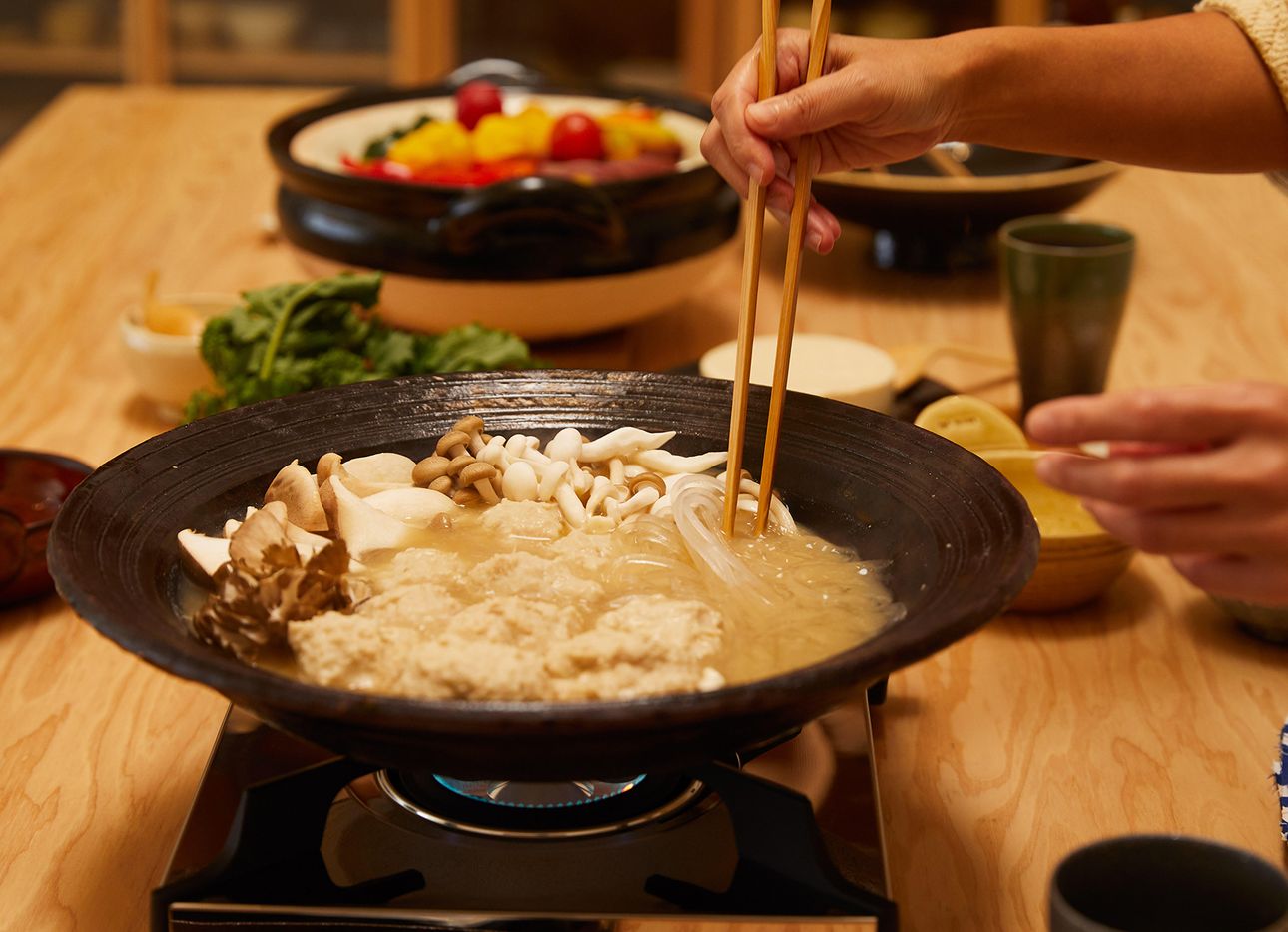
Why Every Kitchen Needs a Donabe Pot
Naoko Takei Moore, owner of the specialty Japanese kitchen boutique Toiro in Los Angeles, tells us about the centuries-old culture and history of cooking with traditional ceramic Japanese earthenware pots called donabe.
Your store stocks all sorts of donabe, and carries the very best. What makes for a good-quality donabe?
It depends on where it’s made, but the kind I know and prefer to carry is from the Iga Prefecture in Japan. Iga pottery is considered to be the best donabe. The clay from there is really special and consistently the most durable, because the entire region of Iga used to be Lake Biwa four million years ago. That clay contains a lot of fossilized microorganisms from the prehistoric era. It makes the clay pot porous, which gives it durability and promotes higher heat retention. The clay is also fired twice for about twelve hours at extremely high temperatures, more than two thousand degrees Fahrenheit.
How did you come to be a donabe specialist?
As a Japanese person living in L.A., I wanted to do something to really connect these two cultures. Something like donabe, which I grew up eating, most people didn’t really know anything about. Hotpot and food cooked in a donabe really symbolizes Japanese communal dining culture and comfort food in a way. At first, it was really hard because donabe was never really recognized as a category of cooking or food in the States, and nobody could pronounce donabe. Maybe, if you went to a Japanese market, you’d find a donabe, but it’s most likely a cheap, mass-produced, machine-made kind.
Does donabe originate from a specific region of Japan, or is it more widespread?
If you go back in history, the original donabe, which simply translates to clay pot, was made more than ten thousand years ago, but the kinds we know now are hundreds of years old. Back in the Edo period, which is roughly two hundred to four hundred years ago, people used donabe regularly as an everyday household item in the kitchen, and not necessarily for hotpot. It wasn’t until maybe after World War II that hotpot became a mainstream thing shared together, with the family surrounding the table.
The donabe is really widespread—I would say it’s like a national cookware for Japanese people. Every household owns at least one. Throughout the country, I’ve never heard of anyone who doesn’t like hotpot because you can be so creative with it. It can be as simple and reasonable or as complicated a dish as you want.
What are some of your favorite dishes to cook in a donabe?
The only thing you cannot do in a donabe is deep-fry, but other than that, you can basically use it to cook anything you can think of. It’s good for the stovetop, and it’s great for the oven. Donabe builds up heat slowly, but once it gets hot, it’ll distribute the heat evenly, and retain heat after you take it off the stove. Of course, the most popular dish to make in it is hotpot, which can involve a variety of flavors and ingredients—but it’s hard for me to say a favorite. I have about twenty different kinds of donabe at home. They’re like my kids, and I don’t want to neglect any one of them. Every day, I’ll try to use a different one, and it’s often the case that I’ll first think of which donabe I want to use. For example, there’s a donabe we use for cooking rice. Last week, I made an Italian-style porcini risotto. Donabe is great for all kinds of food.